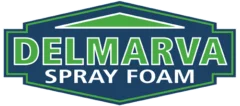Everyone wants to have an energy efficient home. Not only does achieving energy efficiency lead to a comfortable living environment, it also keeps you from overworking your HVAC equipment and saves you lots of money over time.
But achieving energy efficiency is often easier said than done. There are many factors that go into how well your home heats and cools. Understanding what they are can help you to understand better where there are areas of improvement you can tackle.
Energy Efficiency at Home
The U.S. Department of Energy estimates that 49% of a household’s energy costs are spent on heating and cooling. But depending on where you live, you might experience seasonal spikes that make it very expensive to keep things comfortable at home. After all, up to 90% of homes in the U.S. are considered under-insulated, and the older your home (especially if it was built before the 1960s), the more vulnerable it is to uncontrolled heat transfers.
To manage its interior climate, your home depends on a few things. Arguably, the two most important things are air sealing and insulation materials. Improving these two qualities can reduce your energy bills by 11%, and can even increase the market value of your home — more than paying for itself over time.
How Insulation Works
As mentioned, the two most important aspects of an energy efficient home are its airtightness and its insulation materials. This is because the task of keeping your home comfortable throughout the year is all about managing heat transfer.
Energy tends to move from hot spaces to cold spaces. This transfer occurs until the two spaces have reached the same temperature. During the summer, hot air wants to infiltrate your home until the inside and outside temperatures are balanced. Likewise, during the winter, warm inside air wants to escape until a temperature balance is achieved. This type of movement is called “convection.” It is why it is so important to invest in proper air sealing.
Air Sealing
If there are gaps around the perimeter of your home that allow inside air to escape — around doors and windows, for example — conditioned air will move freely through them. When this is the case, you’re essentially watching dollar bills fly out the window.
A poor air seal can be identified in a few ways:
- Look for light leaking through. If you can see outside, you’ve found a gap that needs to be closed.
- Feel for drafts. Sometimes you can experience convection in action as air pushes its way in or out of your home.
- Check for temperature consistency. If the temperature (or humidity level) varies widely from room to room, that could indicate an issue with airtightness.
- Many air leaks cannot be seen! Your home is losing more conditioned air than you think.
Issues with airtightness can be resolved exactly in the way you would expect — by closing the gaps. If they are small, you can use caulk or a weather strip to seal them. Larger gaps might require something more substantial, like making structural improvements.
Home Insulation
Home insulation helps reduce your energy bill by targeting a different aspect of heat transfer, called “conduction.” Thermal conductivity is the measure of how quickly heat moves through solid materials. When it comes to home energy efficiency, you want to choose a material with high thermal resistance (R-value), which means that heat moves through it very slowly.
When the hot or cold outside environment comes into contact with your building materials — the walls, roof, soil around the basement, etc. — it will encourage heat transfer. Adding materials like fiberglass, spray foam, cellulose, or other types of insulation can slow that transfer and reduce your energy bill by allowing your HVAC system to rest for longer periods of time.
There are a few ways to identify poor insulation in your home, some of which are similar to identifying poor air seals:
- Inspect your existing insulation. Check the type and thickness in unfinished spaces or remove electrical outlet covers and (safely!) look inside the wall cavity.
- Check for temperature consistency. If the temperature (or humidity level) varies widely from room to room, that could indicate an issue with the quality of your insulation.
- Find out when your home was built. If it was before 1960, you’re likely in need of an upgrade regardless of what’s in place.
Some types of insulation can also improve the airtightness of your home — especially loose-fill insulation and spray foam, which can more easily fit into irregular spaces. More rigid and defined materials, like fiberglass batts or foam panels, are best used in open cavities.
Home Insulation Types
Not all home insulation materials are created equal. The type you choose will largely depend on the characteristics of the space you are trying to insulate, the stage of construction you are in (are you building something new or are you installing insulation in an existing space?), and your budget.
Here are a few different types of insulation and how they can help you save money:
- Blown-in insulation: This includes loose-fill fiberglass and cellulose. This material is great for filling finished and irregular spaces.
- Insulation batts: Fiberglass batts are low cost and one of the most common insulation materials. They are commonly installed in open spaces during building construction.
- Spray foam: This premium insulation product is installed by a professional insulation contractor. Because spray foam insulation expands into a rigid material, it can improve your home’s airtightness and its structural integrity.
Insulation With Delmarva
You might be surprised by how much energy you lose with improper air sealing or insufficient insulation. And while there is an upfront cost associated with improving the energy efficiency of your home, the long-term savings will make up the cost more quickly than you think. You might even come out ahead!
Contact our team of trained professionals today to learn more about how you can improve your home insulation and reduce your energy bills.

